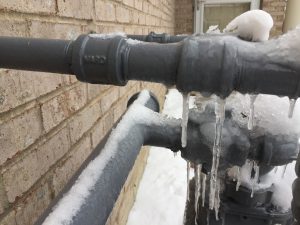Prevent Frozen Pipes in Cold Weather: Professional Advice
Prevent Frozen Pipes in Cold Weather: Professional Advice
Blog Article
Just how do you feel when it comes to Helpful Tips to Prevent Frozen Pipes this Winter?

Winter can ruin your plumbing, especially by freezing pipes. Right here's just how to prevent it from happening and what to do if it does.
Introduction
As temperatures decrease, the threat of icy pipelines boosts, possibly bring about pricey fixings and water damages. Recognizing how to stop icy pipes is important for house owners in cold climates.
Comprehending Icy Pipelines
What creates pipelines to freeze?
Pipes ice up when exposed to temperatures below 32 ° F (0 ° C) for extended durations. As water inside the pipes ices up, it expands, taxing the pipe wall surfaces and potentially creating them to burst.
Risks and problems
Frozen pipelines can bring about water supply disturbances, residential property damage, and pricey repair work. Ruptured pipelines can flooding homes and trigger considerable structural damage.
Indicators of Frozen Pipeline
Determining icy pipes early can avoid them from rupturing.
Just how to identify frozen pipes
Search for reduced water circulation from faucets, uncommon odors or noises from pipes, and visible frost on exposed pipes.
Avoidance Tips
Shielding at risk pipelines
Wrap pipes in insulation sleeves or use warmth tape to secure them from freezing temperature levels. Focus on pipes in unheated or external areas of the home.
Heating strategies
Keep interior rooms appropriately heated up, especially locations with plumbing. Open up cupboard doors to allow cozy air to distribute around pipes under sinks.
Shielding Outdoor Pipes
Garden pipes and outdoor taps
Disconnect and drain yard hoses before winter. Set up frost-proof spigots or cover exterior faucets with insulated caps.
What to Do If Your Pipes Freeze
Immediate actions to take
If you suspect icy pipes, maintain faucets available to ease stress as the ice thaws. Use a hairdryer or towels soaked in hot water to thaw pipelines gradually.
Long-Term Solutions
Architectural changes
Take into consideration rerouting pipelines far from outside wall surfaces or unheated locations. Include additional insulation to attic rooms, basements, and crawl spaces.
Upgrading insulation
Purchase top notch insulation for pipes, attics, and walls. Proper insulation helps keep constant temperatures and reduces the risk of icy pipes.
Verdict
Protecting against frozen pipes calls for positive actions and quick responses. By recognizing the reasons, signs, and preventive measures, homeowners can secure their plumbing during winter.
6 Proven Ways to Prevent Frozen Pipes and Protect Your Home
Disconnect and Drain Garden Hoses
Before winter arrives, start by disconnecting your garden hoses and draining any remaining water. Close the shut-off valves that supply outdoor hose bibs and leave the outdoor faucet open to allow any residual water to drain. For extra protection, consider using faucet covers throughout the colder months. It’s also important to drain water from any sprinkler supply lines following the manufacturer’s directions.
Insulate Exposed Pipes
Insulating your pipes is an effective way to prevent freezing. Pipe insulation is readily available at home improvement stores and is relatively inexpensive. Pay close attention to pipes in unheated areas such as the attic, basement, crawl spaces, or garage. Apply foam insulation generously to create a buffer against the cold. You can also wrap your pipes in heat tape or thermostat-controlled heat cables for added warmth.
Seal Air Leaks
Inspect your home for any cracks or openings that could let in cold air. Seal any holes around the piping in interior or exterior walls, as well as the sill plates where your home rests on its foundation. Additionally, make sure to keep your garage door closed unless you’re entering or exiting. Leaving it open creates a significant air leak that can lead to frozen pipes.
Allow Warm Air Circulation
During cold snaps, it’s essential to allow warm air to circulate evenly throughout your home. Leave interior doors ajar to promote better airflow. Open kitchen and bathroom cabinets to help distribute heat consistently around the rooms. If you have small children or pets, be sure to remove any household chemicals or potentially harmful cleaners from open cabinets for safety.
Let Faucets Drip
A small trickle of water can make a big difference in preventing ice formation inside your pipes. When temperatures drop significantly, start a drip of water from all faucets served by exposed pipes. This continuous flow helps prevent the water from freezing. Additionally, running a few faucets slightly can relieve pressure inside the pipes, reducing the chances of a rupture if the water inside does freeze.
https://choateshvac.com/6-proven-ways-to-prevent-frozen-pipes-and-protect-your-home/

I was shown that report on How to Prevent Your Pipes From Freezing from a friend on another domain. Sharing is caring. You just don't know, you may be doing someone a favor. I praise you for your time. Please stop by our blog back soon.
Request Estimate Report this page